Earth’s Vegetation from Suomi NPP satellite. World map of vegetation data collected by the Suomi NPP satellite (National Polar-orbiting Partnership) in a partnership between NASA and the National Oceanic and Atmospheric Administration (NOAA). Credit: NASA/NOAA
Photo and Video Gallery below[/caption]
Herbal Earth: that’s the title of a spectacular collection of vivid new views of the Earth’s vegetation captured over the past year by the Suomi NPP satellite.
NPP is short for National Polar-orbiting Partnership – an Earth science satellite partnership between NASA and the National Oceanic and Atmospheric Administration (NOAA).
Although it’s rather reminiscent of the manmade ‘World at Night’ – its actually the ‘Natural World of Living Green Life.’
The Suomi NPP satellite data were collected with the Visible-Infrared Imager/Radiometer Suite (VIIRS) instrument from April 2012 to April 2013 and used to generate this gallery of images and animations – released by NASA and NOAA on June 19.
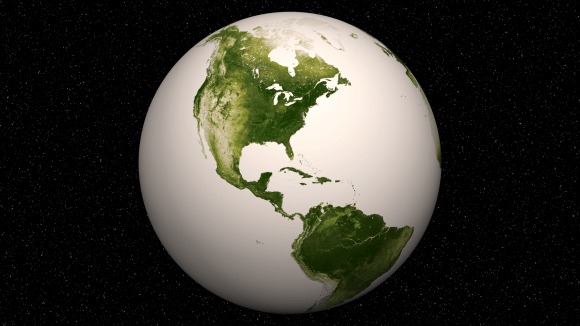
Suomi NPP was launched on October 28, 2011 by a Delta II rocket and placed into a sun-synchronous orbit 824 km (512 miles) above the Earth. It orbits Earth about 14 times daily.
The VIIRS instrument measures vegetation changes over time by looking at changes in the visible and near-infrared light reflected by vegetation. The 22-band radiometer sensor can detect subtle differences in greenness.
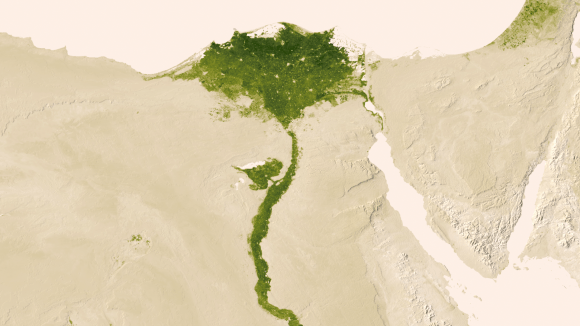
The data are incorporated into the Normalized Difference Vegetation Index (NDVI) which represents the photosynthetic potential of vegetation.
The NVDI measures and monitors plant growth, vegetation cover and biomass production from the Suomi NPP satellite information.
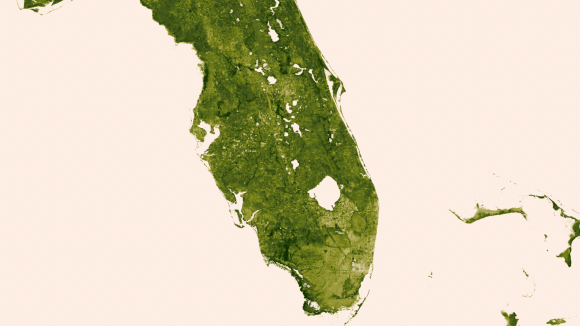
A quarter of the Earth’s surface is covered by some green vegetation, the remainder is the blue ocean.
Video: Green- Vegetation on Our Planet (Tour of Earth)
And don’t forget to “Send Your Name to Mars” aboard NASA’s MAVEN orbiter- details here. Deadline Very Soon: July 1, 2013. Launch: Nov. 18, 2013
…………….
Learn more about Earth, Mars, Curiosity, Opportunity, MAVEN, LADEE and NASA missions at Ken’s upcoming presentation
June 23: “Send your Name to Mars on MAVEN” and “CIBER Astro Sat, LADEE Lunar & Antares Rocket Launches from Virginia”; Rodeway Inn, Chincoteague, VA, 8 PM
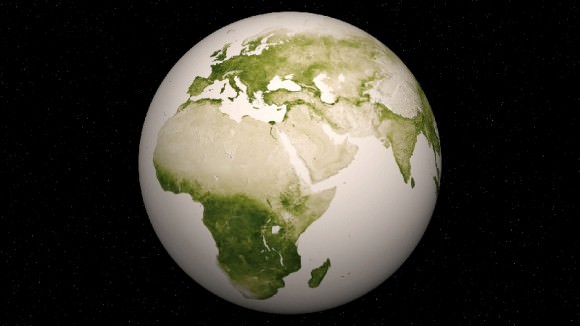

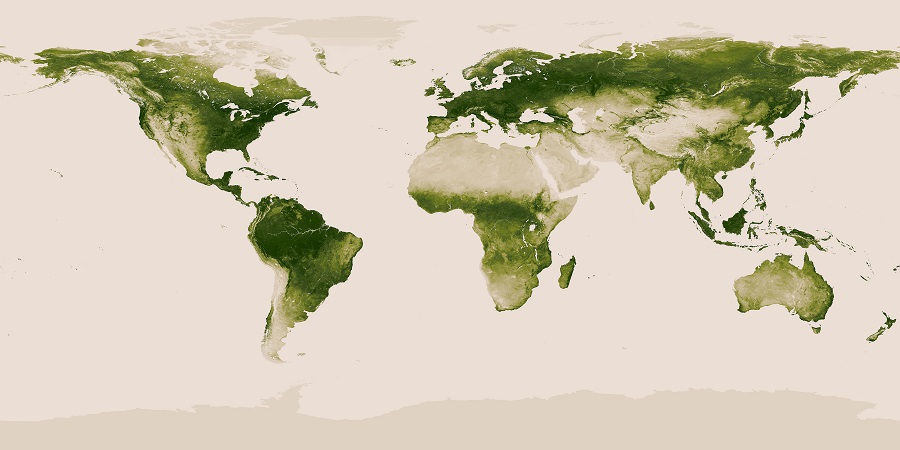
Unfortunately, it s just launched on 2011, so we don’t see much change compared to last decade.
They did say they picked up phytoplancton, which stands for half of the primary production (PP) of photosynthesis [HT: Wikipedia], but for some reason they didn’t show the data. Perhaps for the reason described in the link, that measuring chlorophyll picks up the amount of phytoplancton but not its production, which one can see by comparing with fluorescent light which is a byproduct of the photosynthesis at work.
Btw, the last figure in the link is interesting here for two reasons:
– It shows the dust corridor from Sahara that also supplies the Amazon with nutrients, primarily iron. The corridor may continue on the west side of South America, or the production in that area is current related, but in any case it puts the ironic question if global PP would drop or not if Sahara got reforested.
– The most productive ocean area is around India, where monsoons drags up nutrients from the depths. Makes you wonder if the recent plate collision between India and main Asia was a major boon for the planet. Plate tectonics for the win!?
There are a few good books and other writings from very intelligent scientists and non-scientists. They all explain this planet in a nutshell. The titles of the books and writings have these two words with in them. “Eden Earth”. Earth has one word to explain all. “PERFECTION”. No other word or words needed.
Well, the many results on Earth like this one shows that it is far from “perfect”, whatever measure that is. For example, 100 % net PP (NPP) would mean a green Earth. It is somewhere ~ 50 – 70 % of max NPP (because it is currently a bit colder and much dryer than most productive mesophiles prefer).
As I noted here many times, Earth is much too small to be the best possible habitable, marginal in plate tectonics and with a measly biosphere lifetime. I think we have high hopes to observe more “perfect” habitables within a decade or two.
Ok then go live on Mars. I like it here. You only see relevance to death or the nothingness. Your dead inside. Your meaningless ways are obvious. Its all good though. Earth is perfect for life and yet you say no its not. Your no’s to all will slap you back someday.I know many like you. At deaths door, five cried out ‘God help me’! They were all atheists saying exactly what yu say. In the end those atheists were calling out for WHO?. I will be there also. So will you. Have a good life Mr. Nothingness & death.
Islands really stand out in this video. I am endlessly fascinated with how Earth’s coastlines have changed since the last ‘ice ages’. Imagine the oceans some 300 feet lower. Archeology along those ancient shorelines would no doubt change human history. Ocean penetrating *.sat radar images and laser altimetry have only just begun to fill in the gaps…. where to look.
Where are the billionaire scientifically inclined philanthropists when you need em?
Elon Musk & Jeff Besos say Hi!
striking preponderance in the northern hemisphere, eh?